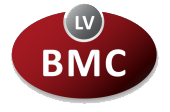“Exotic” site microbiome and G-protein coupled receptor functional research group (D.Fridmanis lab)
Due to expertize in various techniques of molecular biology and past research experience, the scientific interests of the group are diverse. However two major directions – microbiome studies and functional studies of G-protein coupled receptors (GPCR) prevail over others. In the field of microbiome we are actively studying such human body sites as gut, heart valve, blood, throat, stomach and hair follicle while GPCR research is directed towards search of novel peptide ligands for orphan receptors, molecular studies of melanocortin receptors and functional characterization of melanocortin receptors that are encoded by minor alleles of various animal species. In addition within the scope of collaboration based research we are participating in soil, environmental, wastewater, micro plastics, insect gut, plant and seed microbiome studies as well as performing genetic characterization of local ruminant breeds and urban Northern goshawks (Accipiter gentilis).

Dāvids Fridmanis, PhD
Head of the scientific group, senior researcher
Personnel
Dāvids Fridmanis, PhD, davids@biomed.lu.lv
Ineta Kalniņa, PhD, ineta.kalnina@biomed.lu.lv
Dita Gudrā, MSc. biol., dita.gudra@biomed.lu.lv
Ance Roga, MSc. biol., ance.roga@biomed.lu.lv
Edgars Liepa, MSc. biol., edgars.liepa@biomed.lu.lv
Edmunds Skinderskis, edmunds.skinderskis@biomed.lu.lv
Megija Lunģe, megija.lunge@biomed.lu.lv
Maija Ustinova, BSc. biol., maija.ustinova@biomed.lu.lv
Areas for searching partners
- Mikrobiome studies
- G-protein coupled receptor studies
- Animal population genetics and genomic studies
10 the most representative publications for the scientific group
- Bankina, B., Bimsteine, G., Paulovska, L., Paura, L., Pavlovica, O., Kaneps, J., Neusa-Luca, I., Roga, A. and Fridmanis, D. (2019). “Effects of soil tillage and crop rotation on the development of wheat stem base diseases.” Canadian Journal of Plant Pathology 41(3): 435-442, DOI: 10.1080/07060661.2019.1605409
- Gramatniece, A., Silamikelis, I., Zahare, I., Urtans, V., Zahare, I., Dimina, E., Saule, M., Balode, A., Radovica-Spalvina, I., Klovins, J., Fridmanis, D. and Dumpis, U. (2019). “Control of Acinetobacter baumannii outbreak in the neonatal intensive care unit in Latvia: whole-genome sequencing powered investigation and closure of the ward.” Antimicrob Resist Infect Control 8: 84, DOI: 10.1186/s13756-019-0537-z
- Gudra, D., Shoaie, S., Fridmanis, D., Klovins, J., Wefer, H., Silamikelis, I., Peculis, R., Kalnina, I., Elbere, I., Radovica-Spalvina, I., Hultcrantz, R., Skenders, G., Leja, M. and Engstrand, L. (2019). “A widely used sampling device in colorectal cancer screening programmes allows for large-scale microbiome studies.” Gut 68(9): 1723-1725, DOI: 10.1136/gutjnl-2018-316225
- Gudra, D., Pupola, D., Skenders, G., Leja, M., Radovica-Spalvina, I., Gorskis, H., Vangravs, R. and Fridmanis, D. (2020). “Lack of significant differences between gastrointestinal tract microbial population structure of Helicobacter pylori-infected subjects before and 2 years after a single eradication event.” Helicobacter 25(5): e12748, DOI: 10.1111/hel.12748
- Kalnins, M., Berzins, A., Gudra, D., Megnis, K., Fridmanis, D., Danilko, P. and Muter, O. (2020). “Selective enrichment of heterotrophic nitrifiers Alcaligenaceae and Alcanivorax spp. from industrial wastewaters.” AIMS Microbiol 6(1): 32-42. DOI: 10.3934/microbiol.2020002
- Lamsters, K., Ustinova, M., Birzniece, L., Silamiķelis, I., Gaidelene, J., Karušs, J., Krievāns, M., Kasparinskis, R., Fridmanis, D. and Muter, O. (2020). “Bacterial and archaeal community structure in benthic sediments from glacial lakes at the Múlajökull Glacier, central Iceland.” Polar Biology, DOI: 10.1007/s00300-020-02770-8
- Davids, M., Gudra, D., Radovica-Spalvina, I., Fridmanis, D., Bartkevics, V. and Muter, O. (2017). “The effects of ibuprofen on activated sludge: Shift in bacterial community structure and resistance to ciprofloxacin.” J Hazard Mater 340: 291-299, DOI: 10.1016/j.jhazmat.2017.06.065
- Fridmanis, D., Roga, A. and Klovins, J. (2017). “ACTH Receptor (MC2R) Specificity: What Do We Know About Underlying Molecular Mechanisms?” Front Endocrinol (Lausanne) 8(13): 13, DOI: 10.3389/fendo.2017.00013
- Krams, I. A., Kecko, S., Joers, P., Trakimas, G., Elferts, D., Krams, R., Luoto, S., Rantala, M. J., Inashkina, I., Gudra, D., Fridmanis, D., Contreras-Garduno, J., Grantina-Ievina, L. and Krama, T. (2017). “Microbiome symbionts and diet diversity incur costs on the immune system of insect larvae.” J Exp Biol, DOI: 10.1242/jeb.169227
- Muter, O., I, P., Selga, T., Berzins, A., Gudra, D., Radovica-Spalvina, I., Fridmanis, D. and Bartkevics, V. (2017). “Removal of pharmaceuticals from municipal wastewaters at laboratory scale by treatment with activated sludge and biostimulation.” Sci Total Environ 584-585: 402-413, DOI: 10.1016/j.scitotenv.2017.01.023

